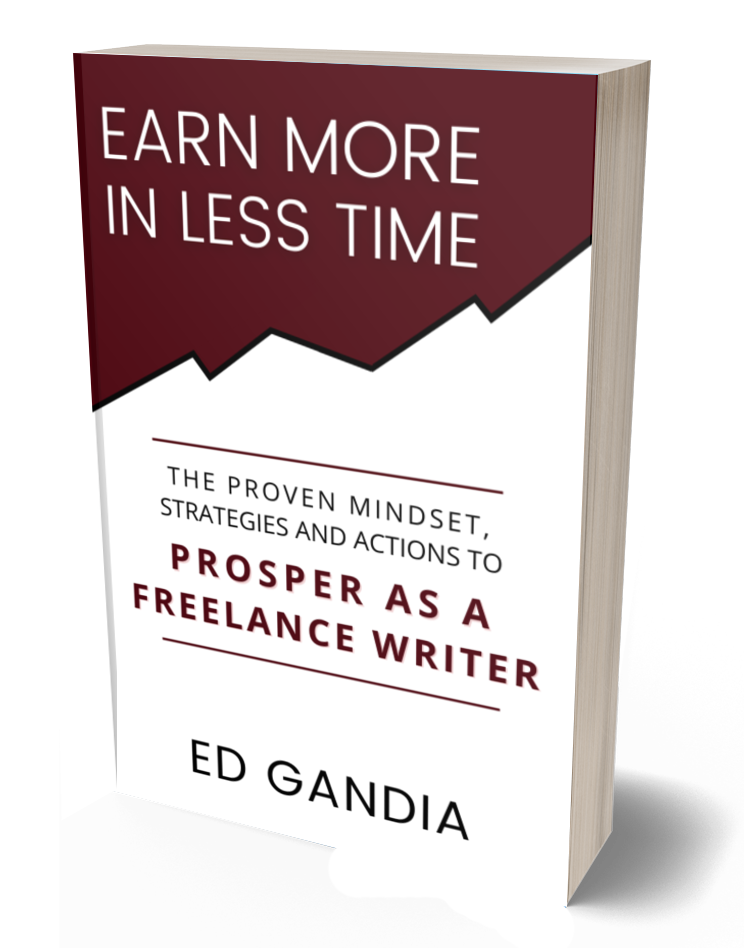Few topics bring about as much doubt, fear and insecurity as pricing. In fact, pricing is the second topic I get the most questions about — the first being how to land more and better clients.
What should I charge for X?
What should I include in the scope of work? How should I present my pricing? How should I think about my offers or options? How can I maximize what I charge and still land the deal?
And how do I create the conditions that will make it easier for me to command premium prices?
These are just some of the most common questions I hear. And they’re a sampling of what we cover in this episode.
Joining me today is my colleague Jonathan Stark, a sought-after coach and consultant in the software development space. And in this episode we’re doing something a little different. We’re actually interviewing each other. And we’re running the same material in each of our podcasts: High-Income Business Writing and Jonathan’s Ditching Hourly podcast.
Jonathan has had a big influence in the way I price and think about my work. And I can’t recommend his material enough. So make sure to check out his podcast and website, including his 5-page proposal template.
This was a really fun and in-depth conversation that will get you thinking a little differently about pricing. I love the ideas Jonathan brings into the discussion from the world of software development, because as writers and marketers I feel we have a lot to learn from the most successful software consultants. At the same time, you’ll notice that there are also a lot of similarities between our professions.
Anyway, this episode will be well worth your time, regardless of where you are in your business journey or how long you’ve been on your own.
The notes that follow are a very basic, unedited summary of the show. There’s a lot more detail in the audio version. You can listen to the show using the audio player below. Or you can subscribe on Apple Podcasts, Spotify, Stitcher, Google Podcasts, Amazon Music or wherever you listen to podcasts.
Key Topics and Bullets:
- Importance of finding a small percentage of a large market as good clients
- Not needing many clients to succeed
- Valuable content available on jonathanstark.com
- Additional resources at b2blauncher.com for pricing and related information
- Initial Contact and Conversation with Potential Clients
- Identifying client needs and objectives
- Asking the right questions to align interventions with client goals
- Articulating oneself as the go-to person in high-stakes situations
- Dealing with Prospects and Transitioning to New Services
- Asking better questions and guiding the conversation based on the prospect’s awareness
- Focusing on a specific target market for a smoother sales process and better work
- Differentiating and specializing in a specific niche
Timestamp Overview:
07:09 Jonathan– Somehow they make a buying decision based on, like, oh, this hourly rate seems reasonable, and they make this huge assumption about how long it’s gonna take. But when they jumped on the phone and I was as guilty of this as anyone back in the days when I was doing software projects where in that phone call, I knew that the outcome of the phone call was going to be me writing up an estimate for how many hours I thought it was gonna take to build the thing that told me they want it built. And I spent the entire time in what should have been a sales meeting, really trying to uncover as much scope as humanly possible. You know? Like, yeah, I know it’s gonna have a login, but is it gonna have this software product gonna be multitenant, or is this software product does it have, like, an unusually high need for privacy, or are there any regulations involved with this or whatever? Like I was always looking for, you know, like, can there ever be 2 companies on an invoice, or is it always to 1 company? I was trying to figure out the object model sort of, like, for the database. And then I had a calculation where I could, you know, if the database model was gonna look like this, I kind of uncovered all the business objects, Then I could roughly say, well, I’m gonna need at least 2 screens for every single one of these. There’s gonna be a list view and a detailed view, and each one of those are gonna take me about this long, And come back and be like, oh, it’ll be $75,000 for this. And I spent the entire time in the sales interview uncovering scope to come back with an estimate that was probably without exception, ultimately too low.
14:37 Ed– Now I see why you’re thinking about it this way. Is that an appropriate intervention? Is it an appropriate intervention? Great. In my mind, I’m thinking, how are you thinking about going about it? How are you thinking about it? Because many times, they have the right intervention, but the wrong approach, the wrong plan, the wrong strategy, that’s another potential entry point to add value and to change the conversation. So there’s a few different pivot points there that you need to be aware of to guide them in the right path.
Jonathan– What’s a for software developers who probably never hired a copywriter or a content marketer or anything like that, what’s the conversation? What’s the initial contact feel like? Not with a client who would end up probably being not a great fit. But with some clients, it probably could end up being a good fit. So a qualified lead kinda reaches out to maybe someone you’re coaching, what does that outreach look like? Are they sort of self-diagnosing and self-prescribing? Like, oh, I know we need to do something about what? Do we need a lead magnet, or do we need more blogging, we need a combination of things, we need a sales funnel, and we need better SEO. Like, what is the thing that a good potential like, someone you would get on the phone with, be like, yeah. This might be a good fit. What’s their initial ask look like?
18:28 Ed– You know, so you can end up with a short-term win, but a long-term loss if you just take their lead and don’t ask questions.
Jonathan– Yeah. Exactly. So this oh, we needed 10 pages about this, and you’re like, great. Off to the races, you go and do it. And then you give it to them, and they never even put it on their website. Or it or they do put it on their website, and it doesn’t drive any sign-ups. It doesn’t change the conversation. So, like, in a scenario like you just if someone if I was a, you know, copy if I was a writer and someone came to me and was like, oh, we need a white paper.
23:29 Ed– So the art of this is figuring out how much to push and how to do that masterfully. And that takes time. Know, that takes time to learn, and then you gotta practice. So I would ask, how would we know? And it’s like, well, this well, Where did this stem from? Like, where is this, where did this start? I might find out that it came from the sales team. Sales team is having a really hard time converting people from the initial conversation to the proposal stage. Like, they’re losing people. That gives me something very tangible to hold on to.
31:31 Ed– And then to your point about how to ask it. My favorite question is a Dan Sullivan question, by the way, which is 6 months from today, what would have needed to have happened for you to be really happy with the results, with the white paper? And that really kinda shifts their thinking because now they’re fast-forwarding to, you know, June or July or whatever. It’s like they’re looking back. They’re not here now. They’re looking back from the future. So that’s a really powerful way to get them to, I found, to give you that answer.
Jonathan- That’s my version of the home run question. What would it look like if this is a home run? What would this look like for the business if this project is a home run? And they’ll say stuff that you’re like, woah. Like, that’s impossible? Right? Like, you just disagree with the intervention. You’re just, like, that’s not gonna happen. I’m not willing to take that risk. It could happen maybe, you know, like, you know, what for this to be a home run in the software world, something unrealistic could be like, you know, we’re competing with Facebook, you know, toe to toe with Facebook after 6 months.
37:07 Ed– But, you know, depending on what you have. I don’t want anyone listening to go, well, I definitely don’t have that. So everything they just said doesn’t apply to me. No. The whole idea is we’re just giving you kind of a full spectrum here, and you decide where you add value, where you fit, and come up with your options. So you’re suggesting, hey, in the case of 3 options in a proposal, they build on each other.
Jonathan– Yeah. So let’s actually flip it a different way. Right? So if you wanted to and you just mentioned the word specialize, that is what made me think of it. I’ve worked with a couple of copywriters that that increased their altitude of involvement with a client, which by which I mean, they, more exclusively, over time, would just sell strategic level stuff, like that first option that we just so the the first option we just described is kind of, like, strategy, implementation, and then support, which is one way to slice things. Another way to slice things would be to have, like, to to just specialize in something like, or, like, your initial offering. I’m trying well, maybe it’s not that different. But just operating at the level of that first option and just doing positioning.
37:59 Jonathan– So, like, just for the copywriter like, so may let’s say you’re a copywriter, and you keep on meeting these people. These clients you are attracting who don’t have a white paper problem. They have a positioning problem. Like, they don’t, or a messaging problem. Like, they don’t know how to tell people what they are in a way that clicks. Like, they can’t you know, they the with symptoms of which look like, you know, oh, you you’ve got a sales team, And they it takes, like, 45 minutes a 45-minute presentation with a prospect for the prospect to even start asking the right questions or comparing you to the right alternatives or competitors. Like, they Yeah. Like, they just don’t get it.
45:40 Ed– We spent I mean, that’s 90% of the time, that’s where I start. When we start working together, That’s where we start the discussions. Because 90% of the time, it’s either not specific enough, or it’s very confusing. There’s just a problem with it. The hardest thing is I don’t know if you see this with developers. But writers, you know, this is more on the kind of creative side of things. They came to you. They know you don’t focus on their industry or their sector. But they’re convinced because they came referred or whatever that you’re the one who can help them. But writers have a hard time understanding. And listen, I get it. I felt the same way for years. Is that if you narrow it down, you’re not narrowing down your options. You’re making it easier for people to say yes. And I would rather have a smoother sales process with fewer people but end up with higher quality than to cast a wider net and just go through that mess.
Jonathan– I’m so glad you said wider net because I know that that is the metaphor that’s in people’s minds. But I wanna talk through that metaphor for people who are in that, like, that fear of leaving money on the table, leaving opportunity on the table. When you say, like, why would I cast, why would I just fish with this single hook when I could cast a wide net? And I’m like, no. That’s not right the metaphor’s wrong. The metaphor, you’re the you don’t what am I say, by being a generalist and appealing to everyone, that’s not the net. It’s the water. So if you’re not… Nike has a big net.
53:34 Jonathan– I always think of it as, like, you’re the go-to person for this particular thing, but you are the safe option. You’re the smart choice. Lowest risk. So people who have really high risk are the exact same people who are willing to spend pay a premium. Right? You’re buying insurance. It’s like insurance. It’s called a premium for a reason. You’re paying an insurance premium. So you’re gonna get a premium from people who are sensing this risk. And you’re automatically gonna attract those people because you’re like a magnet. So, like, if you’re the safe option, you’re gonna magnetically attract people who are the most scared. And if you then there’s another dial you can turn here. If you have successfully started to do that, then you can dial up The buying power on the kinds of clients you’re trying to attract. So the more money they have, probably the more risk they’re experiencing.
56:06 Ed– I would say there are 2 great opportunities that are often missed where you can help plant these seeds. One is in your discovery call. I would urge everyone to start developing and practicing some key messages around that. And I like to start it or I like to verbalize it this way. When you work with me, Here’s what you can expect. When you work with me, you don’t have to worry about x, y, z. Say it just like that. I mean, say it in a way that feels natural to you. That should be planting seeds in the discovery call. Your proposal should also emphasize these things. Don’t assume that the prospect’s gonna connect the dots. Is there not a NLP that can come into play here in the conversation? Sure. But go ahead and say it outright and say it confidently. And going back to niching when you do that, it makes it so much easier. The second point and this is what reminds me of this, I have to remind myself of this stuff all the time. I heard an interview years ago with Tony Robbins talking about his coaching. At the time, I’m not I’m sure he still does some of this. He did some 1 on 1 coaching for very select I mean, we’re talking CEOs, top-level athletes. And he said something, and I’m gonna totally paraphrase it here because this is my interpretation of it, that really has stuck with me all those years. He said, I’m the guy that CEO calls when there’s a board meeting the next day and he feels that his job is on the line. I’m the guy that that top-level athlete calls the night before the tournament because they’re having some serious anxiety, I’m the guy that that executive, high net worth individual, thinks that his kid Is at risk of committing suicide, and they need to have that conversation. They need to reach that person, that kid. So he described all these really high-stakes situations and presented himself. He wasn’t bragging. Like, I’m the guy. What is that worth? You know? I think that’s a useful exercise. I’m the guy who or I’m the gal who people call when…fill in the blank. And we all have that. You know, you don’t have to be Tony Robbins, but you need to be able to answer those questions for yourself or fill in those blanks.
01:04:09 Jonathan– So what’s the key? What’s the key next step that the listener takes the very first thing they should do?
Ed–You know, we kinda ended up here, but I think that’s really the starting point. I think it’s really taking a hard look at your positioning, which, by the way, to simplify because it could be a confusing word in my world. It’s about the perception you create in the marketplace. That’s all positioning is. I think of it as 4 elements, what you do, for whom, what makes you different and why those differences matter to that audience, the for whom? Just a very simple way. You need to be able to answer those questions. I would say then distill that into I’m the person you call when, you know, like something simple or your exercise. And then I would say from there, turn it into some updated copy for your website because that’s really the out-market-facing version of that thinking. And number 3 would be to ask better questions.
01:06:15 Jonathan– I agree with all that stuff so much so that I’m just gonna tack a little tail on the end of it about pricing where you just left it, which is that without a good well, whatever. If without being well positioned as the go-to person for something, The safe choice, let’s say, the 1 and only. Without that, value pricing, which a lot of people look at as a silver bullet for increasing their fees, It’s not gonna do anything meaningful for your fees. If you give them a proposal that’s twice as much as the next person and they see no meaningful difference between you and them. You’re not gonna magically make twice as much as you did yesterday. So so value pricing is magical for people who are already the safe choice, the one and only.
Learn more about Jonathan:
https://jonathanstark.com
By the way… whenever you’re ready, here are 3 ways I can help you grow your freelance business:
1. Grab a free copy of my book.
It’s called Earn More in Less Time: The Proven Mindset, Strategies and Actions to Prosper as a Freelance Writer. The title says it all. 😉 — Click Here
2. Join my implementation program and be a case study.
I’m putting together a new implementation group this month. If you’re earning $5k+/month (or the part-time equivalent) from your freelance business … and you’d like to grow your income quickly with better clients … just email me at [email protected]
3. Work with me privately.
If you’re a 6-figure writer who’s trying to earn more in less time, with less stress, I might be able to help you get there faster than you think. Just email me at [email protected] and put “Breakthrough” in the subject line, and I’ll get back to you with more details.






